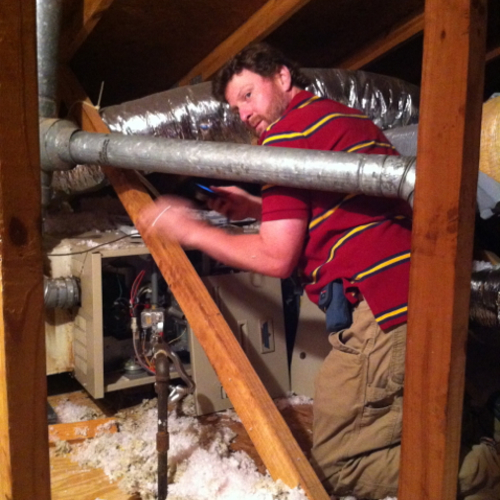
Image Credit: Kathy Kimpel / CC BY 2.0 / Flickr
Developers of the Home Energy Rating System and the Appraisal Institute are teaming up to give home buyers a better understanding of how much it will cost to live in the houses they’re interested in buying.
The Insulation Institute said the collaboration between the Residential Energy Services Network and the appraisers association to include HERS scores on appraisal forms in some states would make energy efficiency more transparent to buyers. The move also could help convince skeptical builders that there’s a return on constructing high-performance buildings.
The HERS Index is a numerical rating system that measures energy consumption relative to a standard reference house. The reference house, a standard new home, has a score of 100; a house with a HERS Index of 70 uses 30% less energy, while a house with a HERS index of 130 uses 30% more energy. The lower the HERS score, the lower the energy costs.
Builders of high-performance houses have long complained that standard appraisals fail to give enough credit for energy-saving features.
“One of the largest barriers to the building and selling of high energy performance homes is that the value of energy upgrades is too often not reflected in the real estate appraisal of a home,” RESNET Executive Director Steve Baden told the Insulation Institute. “Many of the features that make a home energy-efficient are hidden behind drywall and aren’t obvious to home buyers. Our goal is to make information, such as the HERS score of a home, visible in the appraisal so that consumers have more facts available to make their decisions.”
The HERS score will be added to an existing green-building addendum for appraisers, which lists such things as certification under the LEED program, or the National Green Building Standard. The Appraisal Institute will get access to RESNET’s data base of HERS-rated homes — initially in states like Texas with a larger number of HERS rated homes and in other states in the future.
In 2015, there were some 206,000 HERS-rated homes in the U.S. Texas had the highest state total (40,012).
Baden said when a home feature isn’t formally acknowledged in an appraisal, it can’t be financed through a mortgage. That means builders don’t see a financial return on including high-performance building features, a problem that this new effort seeks to fix.
Weekly Newsletter
Get building science and energy efficiency advice, plus special offers, in your inbox.















One Comment
Since I see appraisals all day every working day I find this
interesting. My only question is with regards to assigning a monetary value to a HERs score or to the difference in HERS score.
Currently appraisers are limited with regards to rating condition and quality of construction differences between the subject and the comparable sales. I eagerly look forward to seeing how this turns out.
Log in or create an account to post a comment.
Sign up Log in